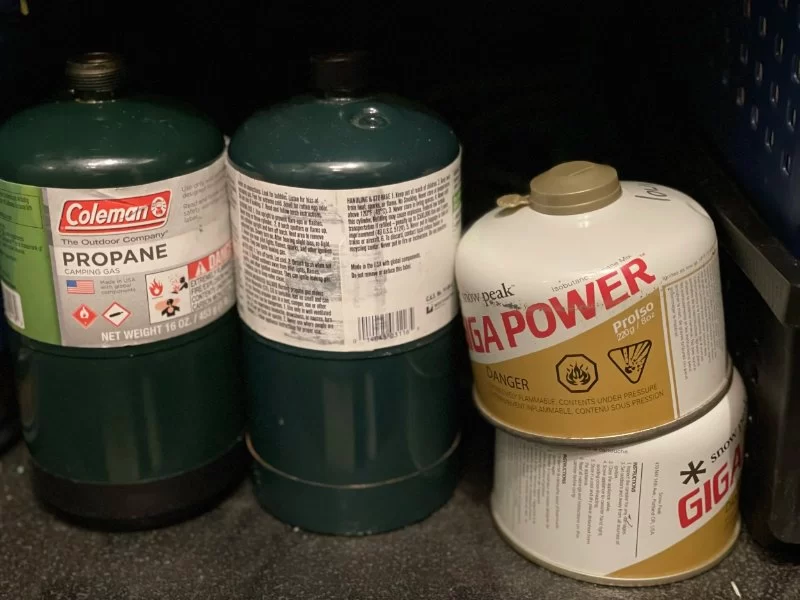- 1. Why Fuel Safety Matters in Camping
- 2. Types of Camping Fuel: Which One to Choose?
- 3. Proper Storage of Camping Fuel
- 4. The Best Camping Fuel Options for Your Next Adventure
- 5. Where to Buy Safe Camping Fuel and Storage Supplies
1. Why Fuel Safety Matters in Camping
Camping is an exciting outdoor activity, but it comes with its own set of challenges. One of the most important aspects of camping is safety, especially when it comes to fuel. Whether you're cooking your meals, heating your tent, or lighting a fire, choosing and storing the right fuel safely can make a big difference. Incorrect storage or improper use of camping fuel can lead to serious accidents, such as fires or explosions. Understanding the different types of fuel and how to handle them properly is key to ensuring your outdoor adventure remains fun and, most importantly, safe.
2. Types of Camping Fuel: Which One to Choose?
When it comes to camping fuel, there are several types available, each with its own pros and cons. Here’s a breakdown of the most common types of camping fuel:
2.1 Propane
Propane is one of the most popular fuels for camping stoves, heaters, and lanterns. It is widely available and easy to store in small canisters. Propane burns cleanly, providing a stable and reliable source of heat. However, it is important to store propane canisters in a cool, dry place, away from any direct heat sources or open flames, to prevent leaks or explosions.
2.2 Isobutane
Isobutane is another popular fuel, commonly used in portable stoves. It is a mixture of butane and propane, offering higher efficiency and a more stable burn at low temperatures. Isobutane is often found in small, lightweight canisters, making it ideal for backpackers and those on the move. It is also easier to store and handle than larger propane canisters but should still be kept in a cool environment to avoid risks.
2.3 White Gas
White gas, or naphtha, is a liquid fuel commonly used in traditional camp stoves and lanterns. It burns cleanly and produces a high heat output, making it a favorite for more serious outdoor enthusiasts. However, it is highly flammable and should be stored in a well-ventilated, cool area away from heat or sparks. White gas canisters are typically refillable, making them a more economical choice for extended camping trips.
2.4 Alcohol (Denatured Alcohol)
Alcohol-based fuel, such as denatured alcohol, is often used in lightweight stoves and is a great choice for minimalist campers. It burns cleanly and doesn’t produce as much heat as propane or white gas, but it’s still an efficient option for cooking in low-demand situations. Alcohol is relatively safe, but it should still be stored in sealed containers away from flames or high temperatures.
3. Proper Storage of Camping Fuel
Correctly storing your camping fuel is just as important as selecting the right type. Improper storage can lead to leaks, spills, or accidental ignition. Here are some best practices for storing camping fuel safely:
3.1 Store Fuel in a Cool, Dry Place
All types of camping fuel should be stored in a cool, dry place, away from heat sources, direct sunlight, or open flames. High temperatures can cause fuel canisters to overheat or even explode. Ideally, keep fuel in a designated storage container that is specifically designed for this purpose.
3.2 Keep Fuel Containers Upright
Fuel containers should always be kept upright to avoid leaks. Storing them on their side can result in spills or damage to the container, which can increase the risk of fire or contamination. Ensure that fuel containers are secured and stable in your storage area.
3.3 Avoid Storing Fuel in Vehicles
While it may be tempting to store camping fuel in your vehicle for convenience, this is highly unsafe. The heat inside a car can fluctuate rapidly, increasing the chances of a dangerous situation. It’s best to store fuel outdoors in a shed or garage, away from living areas.
3.4 Use Fuel Storage Containers
Consider using a fuel storage container with ventilation to allow the proper release of gases. These specialized containers help reduce the risk of leaks or explosions and can be found at many outdoor equipment retailers.
4. The Best Camping Fuel Options for Your Next Adventure
When choosing the best camping fuel for your needs, consider factors such as the duration of your trip, the type of stove or equipment you're using, and the climate. For short backpacking trips, lightweight options like isobutane or alcohol may be ideal. However, for longer trips or colder weather, white gas or propane may offer the reliability and heat output you need. Make sure to select a fuel that matches your outdoor activities and safety preferences.
4.1 For Backpacking and Lightweight Camping
Isobutane and alcohol are great choices for backpackers and those looking to minimize their pack weight. They’re easy to carry and are suitable for cooking lightweight meals. However, ensure that you have enough fuel for the duration of your trip, especially if you’re venturing into colder climates.
4.2 For Extended Camping and Cold Weather
For long camping trips or when camping in cold weather, white gas and propane are the most reliable options. They provide consistent heat and are great for cooking larger meals or heating spaces. However, always be cautious with storage, as these fuels can be dangerous if not handled properly.
5. Where to Buy Safe Camping Fuel and Storage Supplies
If you’re looking to buy camping fuel and storage supplies, it’s important to choose reputable retailers. Pine Cliff Resort offers a wide range of camping products, including the best camping fuel options and safety storage solutions. Whether you're planning a short weekend getaway or a long outdoor adventure, you can find everything you need to stay safe and prepared.
Visit Pine Cliff Resort today to browse our collection of camping gear and fuel storage solutions!







